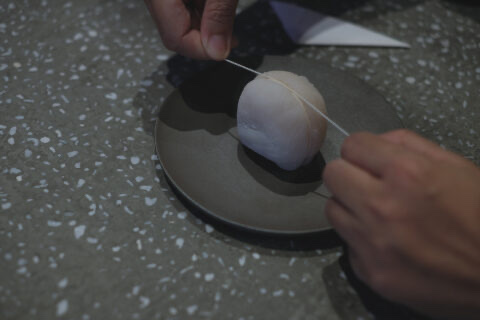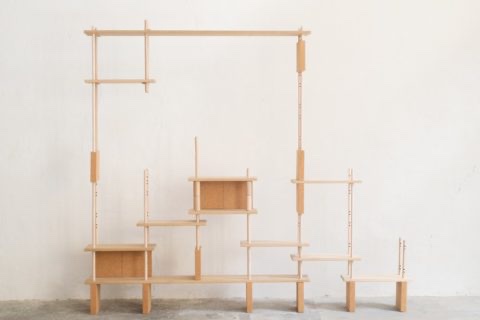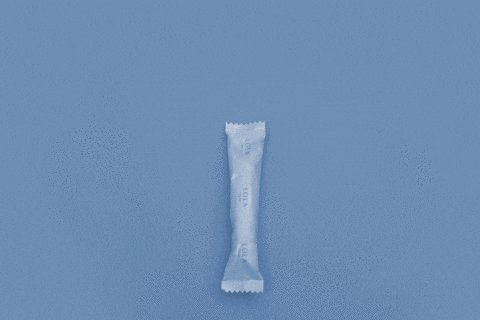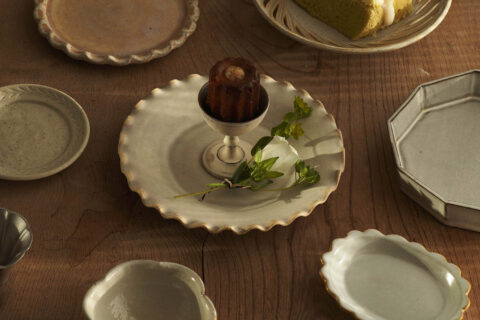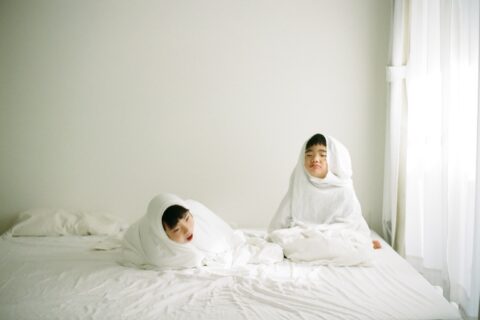
我拿起吳偉丞最近做好了幾隻茶碗仔細的端祥著,有的很淺,相信茶篩一拌,抹茶便會濺得滿身都是;有的很深,茶篩落下摸不見底,大概怎拌茶都泛起起沬。「大部份人買茶碗其實只是用來鑑賞而已,而且,他們覺得哪個合用就挑哪個吧,我才不管用途的事。」吳偉丞說罷爽朗地笑著。吳偉丞,台灣著名的陶藝家,訪問中,他最常說的話是「不管」、「不在意」。

Holding in my hands the few tea bowls Wu Wei Cheng recently made, I realised each of them possesses different depths. Some are so shallow that tea would easily get spilt while whisking; while some are too deep for the whisk to touch the bottom of the bowl. I can imagine it is almost impossible to form bubbles using it. ‘Many treat tea bowl as decoration. They can pick whichever they find fit; I don’t care about the utility value.’ Wu Wei Cheng told me with a bright smile. Wu is a famous Taiwanese potter, who in the interview mentioned more than a few times ‘I don’t care’ and ‘it doesn’t bother me’.
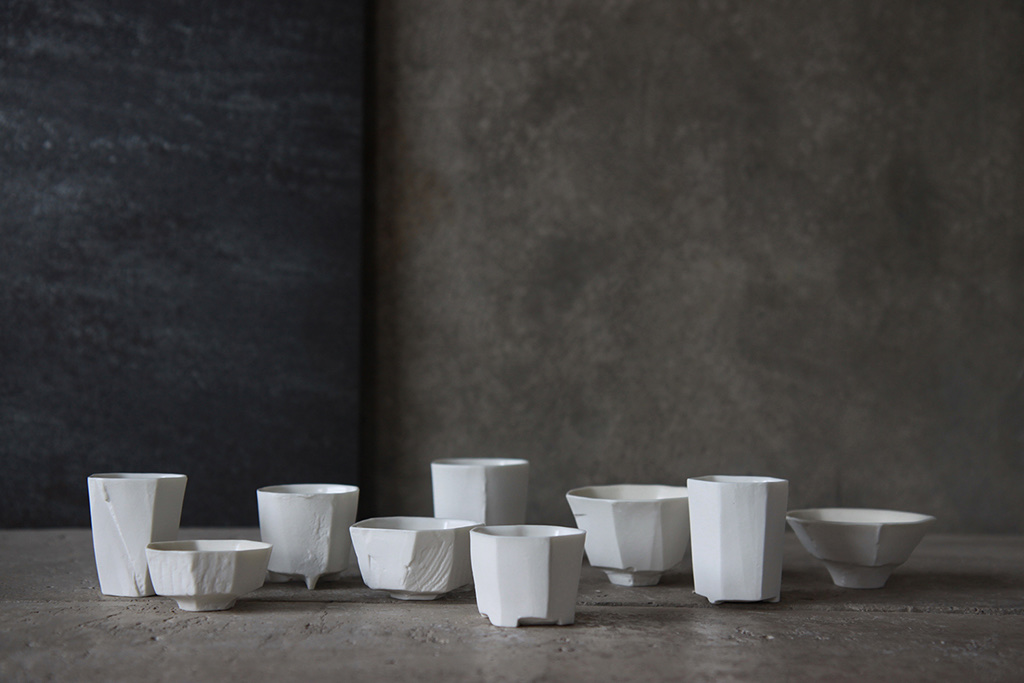
吳偉丞造的茶具,有著其他陶藝家少有的剛勁力度,溫潤質樸等常用於陶藝作品的字眼,不是適合它們的形容詞。他造的一系列白瓷小杯,每一個大小身材不一,身上都都留下一道道刀痕,瓷土被狠狠削去,小杯像經過了木人巷,個個挺拔堅強。見它們菱角分明,以為定是劍拔弩張,拿在手裡,才知道強朗的外表下是滿滿的溫柔,每個峰利的線條都被打磨至平順,觸感如絹。這些小杯子,力量之強大,使之放在桌上時足被視為小小的雕塑。後來聽吳偉丞說,他喜歡建築、室內設計,也喜歡朱銘,希望把朱銘雕塑的視覺風格,應用在茶具之上,我才懂得,他果真造茶具如造雕塑。
Unlike other potters, Wu makes his tea utensils with an extra force of strength. The word ‘gentle’ that is commonly used to describe pottery making, therefore, does not seem to apply to Wu’s works. He made a series of porcelain cups that are all different in size; one thing in common is the obviously prominent carve on them. The cups all appear stout after being incubated by Wu’s strict dealing. Their spiky outlooks may appear intimidating at the first glance, but when holding in hands, one would instantly discover the immense gentleness under the hardline surface. Every single sharp edge is polished into a silk-like smoothness. Regardless of the small sizes, the cups release a powerful energy that can well be perceived as sculptures on a table. Wu later told me that he is into architecture and interior design; he also likes Ju Ming a lot, and therefore wishes to recreate the creative impact of his sculptures with his tea utensils. This made me realised that Wu has indeed a sculptor’s mind when making his tea utensils.
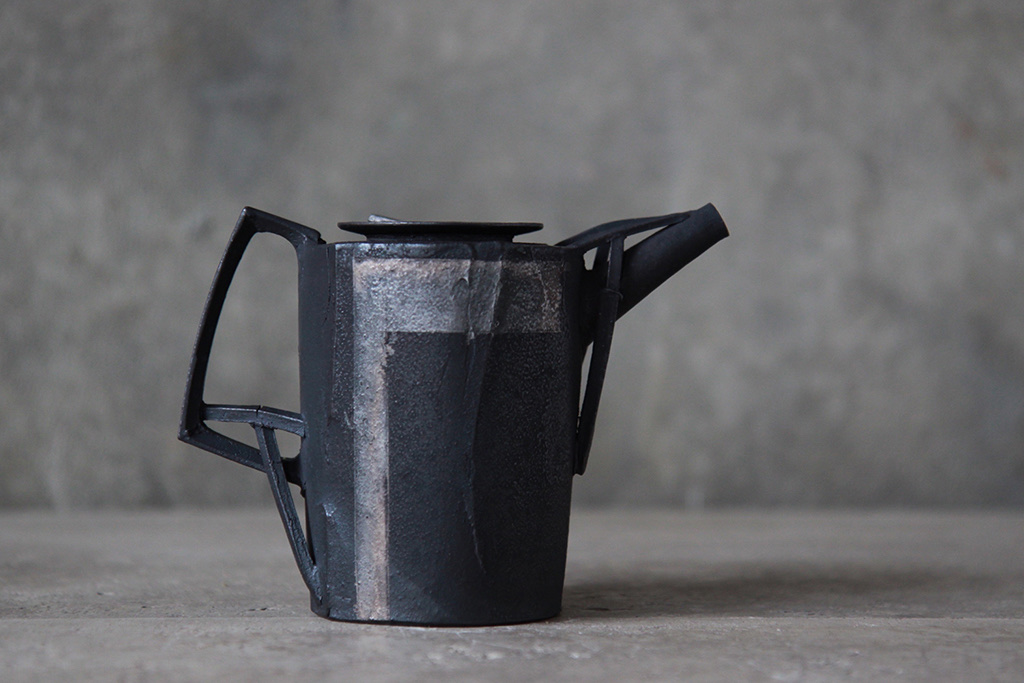

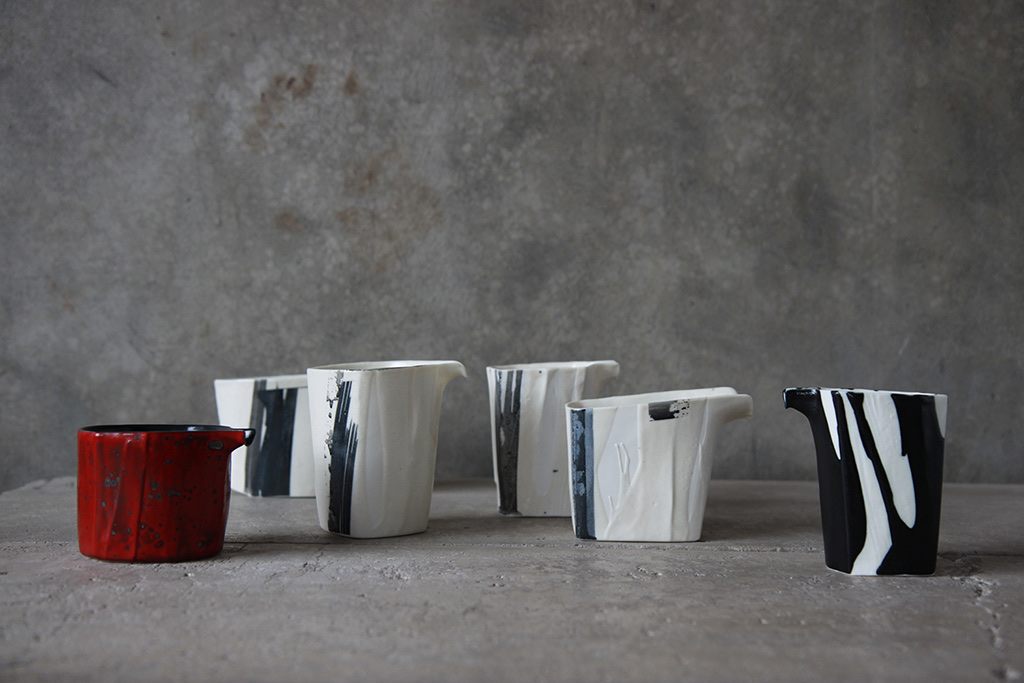
吳偉丞自小便修習藝術,他自言喜愛繪圖,但自高中三年級遇到陶藝後,便一頭栽進去,高中畢業他得到一台壞的轆轤,修好後他便整天埋首在陶泥裡。爸爸見他滿腔熱誠,兩年後竟送他一台煤氣窯,自此,他有了自己簡單的工房。吳偉丞從來沒有拜師學藝,一身技藝全靠自己摸索得來,他說,不拜師比較自由,能從心所慾,壞處是得多花時間。但所謂的多花時間,從初學至得心應手,建立出自己的風格,他也不過用了十年時間而已。
台灣的陶藝家多以製作茶具為主,因為台灣人都喝茶,喝茶是日常生活也是閒情逸志,近來興起中國茶道,更多人願意花錢買昂貴的茶具。正如日式茶道的茶具,中國茶具也自己有標準,聞香杯是高的,品茗杯是偏圓的。這天我來到吳偉丞的工作室,他先為我泡茶,他給我用的杯子卻是高的。「我才不管那些規矩。」他說。我也覺得能盛茶的都可以是杯子,哪管它高矮肥瘦?
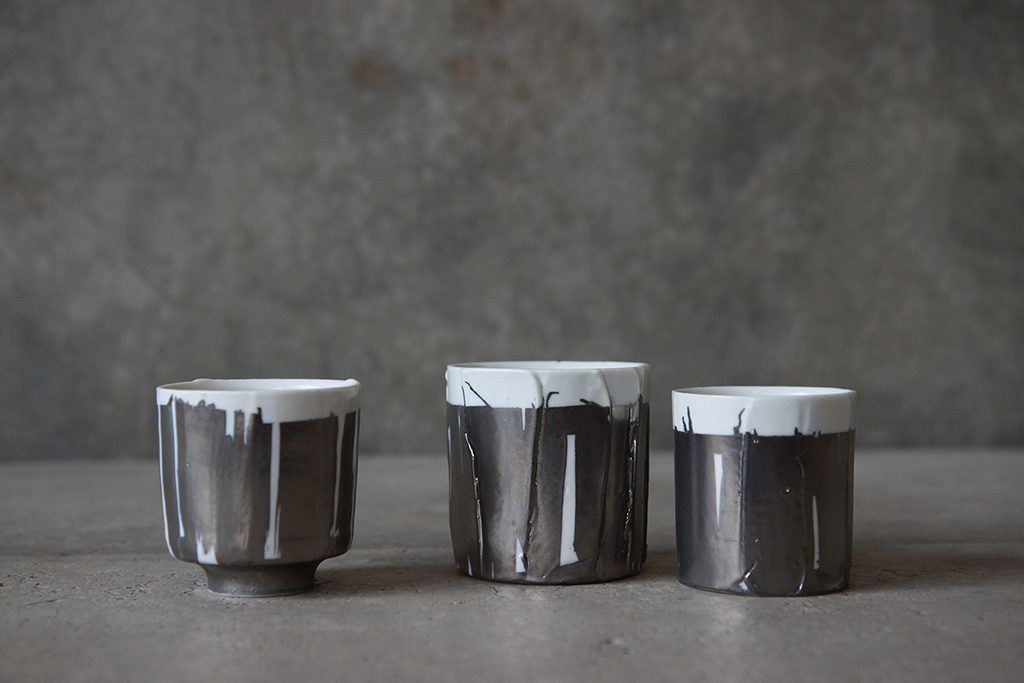

Wu has been learning art since childhood. His passion for drawing was taken over by his enthusiasm for pottery ever since his first encounter with it in his third year in senior high school. Upon graduating from high school, he became completely indulged in working with clay after fixing the potter’s wheel he received. Wu’s father was very impressed by his passion, and gave him a gas fired kiln two years later, which completed his simple private studio. Being a self-taught potter, Wu said exploring and experimenting all by himself gave him a great liberty to create without a boundary, on the other hand, he had to spend more time learning — but ‘more time’ as told by Wu actually means 10 years time to grow from a beginner to an experienced practitioner with a distinctive style.
The majority of Taiwanese potters focuses on making tea utensils for the passion for tea among Taiwanese. Tea drinking is a daily habit as well as a recreational enjoyment. People are even more willing to spend on tea utensils along with the growing trend of Chinese tea ceremony. Canonical standards are not unique to Japanese tea utensils; Chinese tea ceremony likewise has its own rules. For instance, taller cups are for smelling, and shorter cups are for drinking. Interestingly, Wu served me some tea with a tall cup when I visited his studio. He said, ‘I couldn’t care less about standards and rules.’ I actually hold similar stance of neglecting the shape of cups too. As long as they can contain tea, what can keep them from being classified as cups?
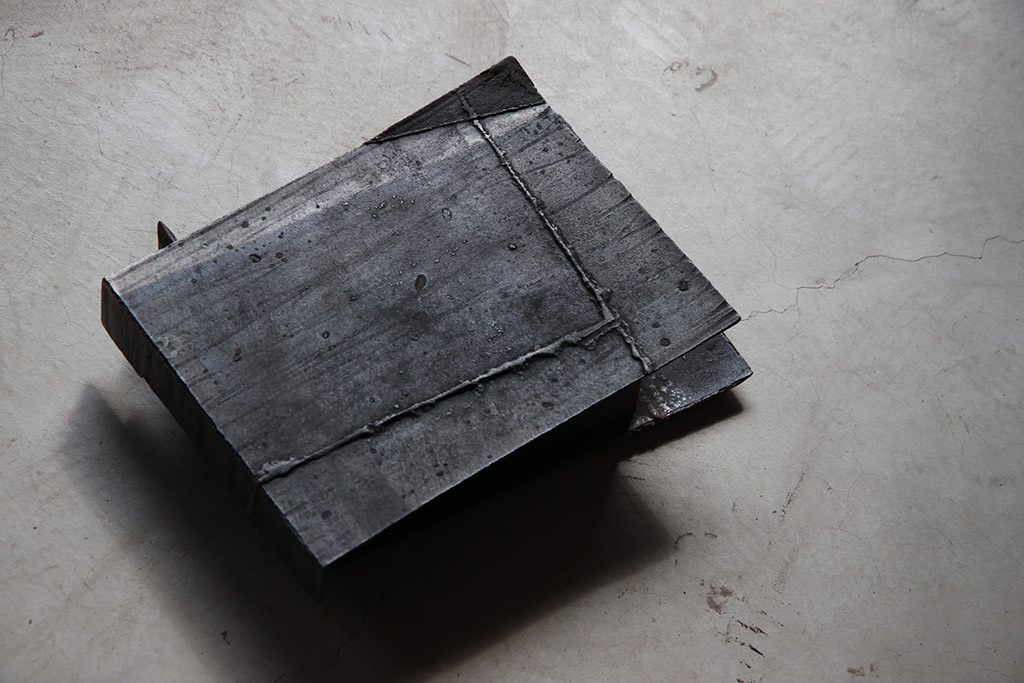

他重視創作自由,卻也有其執著,像是中國茶杯,他偏愛用瓷而非陶土,說瓷對茶湯的表現更好。可能是因為瓷的質感密度較高,視覺上較為幼滑,眼睛與舌頭相連,喝在嘴裡自感到更為順喉。陶土太粗糙,似乎只適合用來盛載日本茶,而且日本茶道與侘寂文化關係密不可分,明亮的瓷器似乎不太洽當。
近年來日本也吹起了中國茶道風,不少日本藝廊扣上門來,希望進口吳偉丞的茶具,只一聽價格便打退堂鼓,他也滿不在乎。日本舉足輕重的生活工藝大師安藤雅信請他到日本舉辦個人展覽,他不是沒興趣只是也不積極,反正要餬口的話,現時的工作量已足夠。這也似乎挺配合他的「不管」哲學。對於工作,他隨緣;對於美學,他隨心。

Despite his insistence on the freedom of design, he has a comparatively stubborn preference on using porcelain instead of clay for making Chinese tea cups. To him, porcelain cup is a better medium for expressing the essence of tea. The higher density of porcelain as a material gives the tea cups a smoother appearance. Our taste buds are stimulated by the visual impact, and as a result, finds the tea smoother. Clay is a very rough material that seemingly suits merely Japanese tea. At the same time, the glossiness of porcelain doesn’t go well with Japanese tea as it contradicts the philosophy of wabi-sabi that heavily influenced Japanese tea ceremony.
Since Chinese tea ceremony became a recent trend in Japan, Wu has been approached by quite many Japanese who wish to import his tea utensils. Most of them gave up the idea after learning the price, however, he appeared totally unperturbed. When invited by the Japanese master of living crafts Masanobu Ando for a solo exhibition in Japan, although he was not in lack of interest, he did not act very enthusiastically. To Wu, his current jobs are already enough to support his life. He lives in line with his philosophy of placidity — takes the jobs that destiny brings to him; follows his heart when creating arts.

